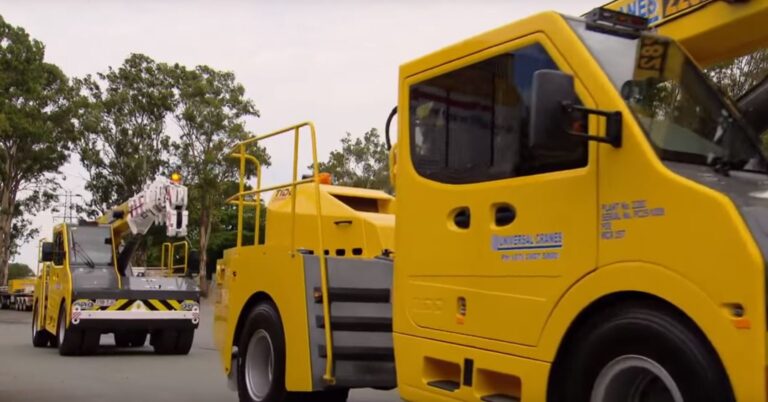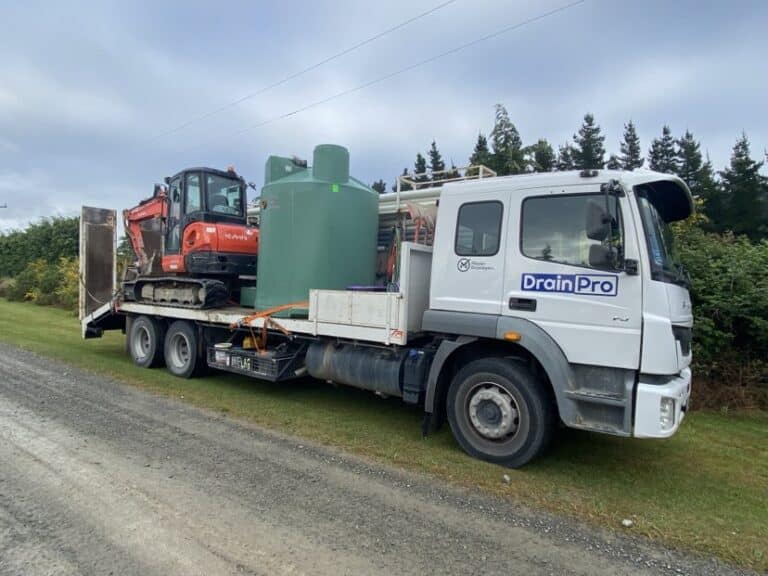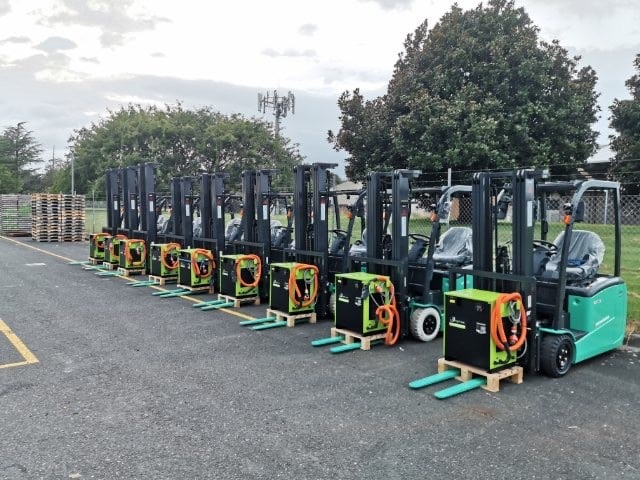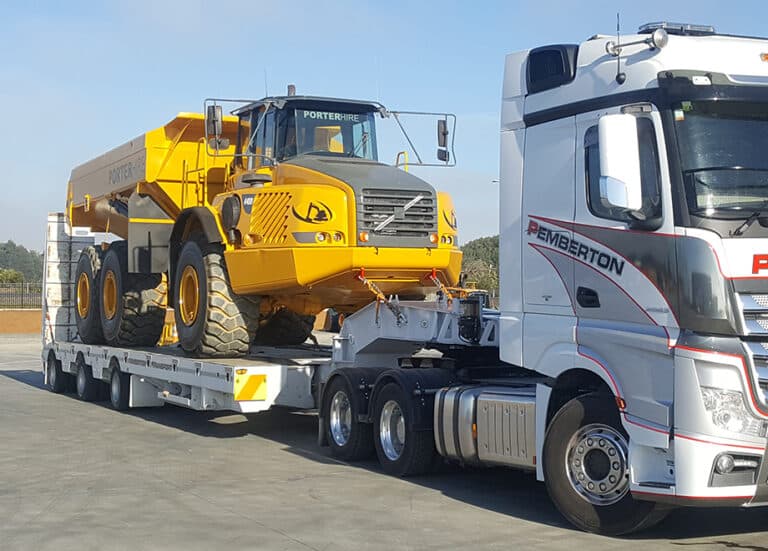Pick and carry cranes are essential in a variety of industries, particularly in construction, logistics, and mining, due to their versatility and mobility. These cranes are designed to lift and transport loads over short distances without the need for outriggers, making them highly efficient on worksites where flexibility is key.
However, operating pick and carry cranes also comes with unique challenges that must be addressed to ensure safety and efficiency. This article explores the common challenges faced during pick and carry crane operations and offers practical solutions to overcome these hurdles.
Common Challenges in Pick and Carry Crane Operations
Safety Hazards
The operation of pick and carry cranes is not without risks, and safety hazards are one of the most significant concerns.
- Risk of Operator Errors and Accidents: Operator errors are a major cause of crane-related accidents. These errors can include poor judgement regarding load weight, improper crane operation, or miscommunication between team members.
- Potential for Load Instability and Falls: Given that pick and carry cranes do not use outriggers, load stability is a crucial factor. Instability can lead to load shifts or even crane tipping, particularly on uneven ground or when moving heavy objects.
- Hazards Associated with Working in Confined Spaces or Near Power Lines: Cranes are often used in areas where space is limited, such as construction sites in urban settings. Working near power lines or within tight spaces increases the risk of accidents, including electrocution or collisions with obstacles.
Terrain and Site Conditions
The nature of the terrain and surrounding site conditions often dictate the ease or difficulty of pick and carry crane operations.
- Challenges Posed by Uneven or Soft Ground: Pick and carry cranes need solid ground to operate efficiently. Soft or uneven ground can lead to loss of traction, difficulty in manoeuvring, and even crane tipping in extreme cases.
- Obstacles and Limited Access Areas: Construction sites often have limited access routes, particularly in urban or remote areas, which can create difficulties for crane movement. Navigating through obstacles such as buildings, equipment, and other machinery requires careful planning.
- Adverse Weather Conditions: Weather is another factor that can affect pick and carry crane operations. Wind, rain, and extreme temperatures all pose risks, particularly to load stability. Wind gusts can cause suspended loads to sway, while rain can reduce visibility and make the ground more treacherous.
Regulatory Compliance
Operating a pick and carry crane comes with significant legal and regulatory responsibilities.
- Adherence to Safety Standards and Regulations: Operators and companies must ensure that their operations comply with local, state, and national safety regulations. Failure to comply can result in heavy penalties, project delays, or even accidents.
- Obtaining Necessary Permits and Approvals: Before pick and carry cranes can be used on site, certain permits and approvals may be required, especially when lifting heavy loads near public roads, buildings, or power lines.
- Keeping Up with Evolving Regulations: The regulatory environment surrounding crane operations is constantly changing. New safety standards are introduced, and existing regulations are updated to reflect technological advancements and safety requirements.
Maintenance and Upkeep
To ensure safe and efficient operation, regular maintenance of pick and carry cranes is vital.
- Ensuring Proper Maintenance and Inspections: Routine inspections are essential to identify wear and tear, mechanical failures, or any other issues that could compromise crane safety.
- Addressing Wear and Tear, Component Failures: Heavy use over time leads to inevitable wear and tear on crane components such as cables, hydraulic systems, and motors, increasing the risk of failure if not promptly addressed.
- Managing Costs Associated with Maintenance: Maintenance can be costly, but neglecting it can lead to equipment failure or accidents, resulting in even higher costs, both financially and in terms of safety.
Solutions to Common Challenges
Operator Training and Certification
Proper training is the foundation of safe and effective pick and carry crane operations.
- Comprehensive Training Programs to Enhance Operator Skills: Investing in thorough training ensures that operators are well-versed in crane mechanics, operation techniques, and site safety protocols.
- Certification Requirements to Ensure Competency: Operators should meet the certification standards set by regulatory bodies to ensure they are fully competent to operate pick and carry cranes in various environments.
- Regular Refresher Training to Stay Updated on Best Practices: Crane technology and safety protocols are constantly evolving. Ongoing training helps operators stay updated on the latest advancements and best practices in pick and carry crane operations.
Advanced Safety Technologies
The use of modern technology can significantly reduce the risks associated with crane operations.
- Load Stability Systems and Sensors: Load stability sensors provide real-time feedback on load positioning, helping to prevent accidents related to instability.
- Obstacle Detection and Avoidance Systems: These systems use radar or cameras to detect nearby obstacles, minimising the risk of collisions and accidents on site.
- Crane Camera Systems for Improved Visibility: Camera systems give operators better visibility, particularly in confined spaces or during low-light conditions, helping to avoid accidents.
Site Preparation and Planning
Thorough preparation is key to overcoming terrain and site-related challenges.
- Thorough Site Assessments to Identify Potential Hazards: Before crane operations begin, a comprehensive site assessment should be conducted to identify risks such as uneven ground, power lines, or obstacles.
- Ground Stabilisation and Preparation as Needed: If the ground is soft or uneven, stabilisation measures should be put in place, such as adding gravel or using ground mats to distribute the crane’s weight.
- Contingency Plans for Adverse Weather Conditions: Given the unpredictability of weather, having contingency plans in place ensures that operations can either continue safely or be temporarily suspended until conditions improve.
Regular Maintenance and Inspections
Ongoing maintenance ensures that pick and carry cranes remain safe and efficient.
- Scheduled Maintenance Programs: Implementing a scheduled maintenance program helps keep cranes in optimal working condition and reduces the risk of equipment failure during critical operations.
- Pre-Operation Inspections: Before each use, operators should conduct a quick inspection to check for any signs of wear or malfunction.
- Thorough Inspections by Qualified Personnel: More detailed inspections should be carried out regularly by trained personnel to catch any potential issues that might be missed during pre-operation checks.
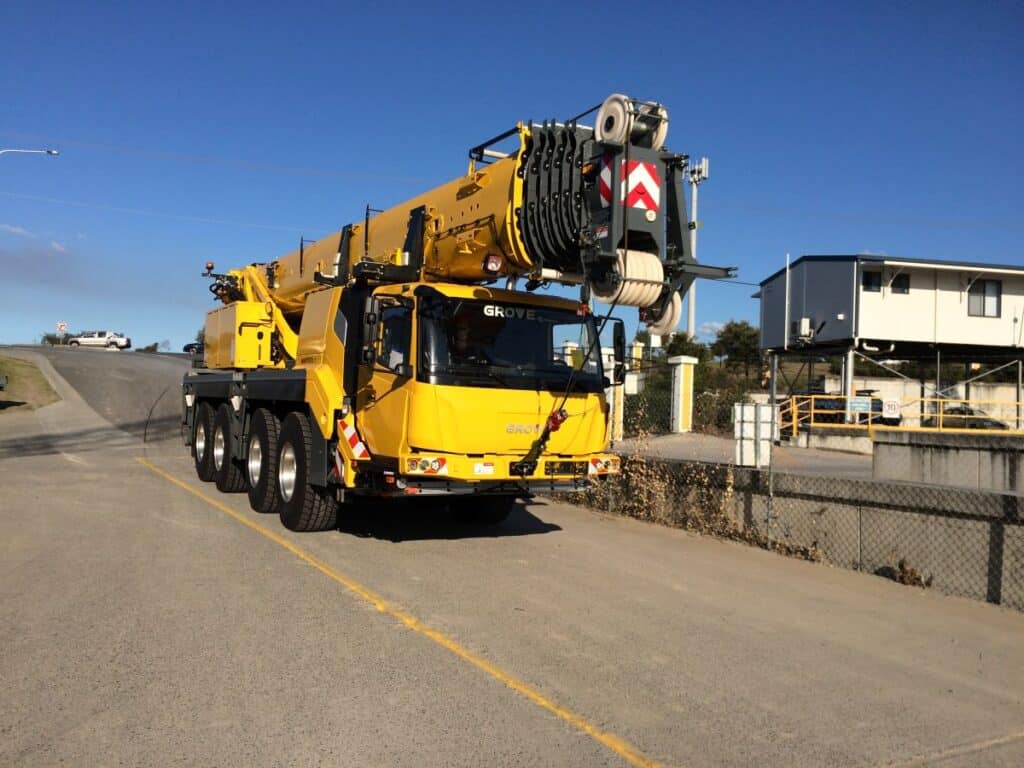
Regulatory Compliance and Risk Management
Staying on top of regulatory requirements and implementing risk management strategies can reduce the likelihood of accidents.
- Stay Updated on Industry Regulations: Keeping up with the latest changes in regulations ensures that crane operations are always in compliance, reducing the risk of legal issues.
- Implement Risk Assessment Procedures: Regular risk assessments should be part of every project to identify and mitigate potential hazards before they become a problem.
- Develop Emergency Response Plans: In the event of an accident or emergency, having a well-prepared response plan can help minimise damage and ensure the safety of workers.
Case Studies: Successful Overcoming of Challenges
Construction Project with Limited Access and Soft Ground
In a recent construction project, a pick and carry crane was needed to move heavy materials through a site with limited access and soft ground. The team overcame these challenges through careful planning, which included conducting a thorough site assessment, stabilising the ground with gravel, and using a smaller, more agile crane to navigate the tight spaces.
Disaster Relief Operation in a Challenging Environment
During a disaster relief operation, pick and carry cranes were deployed in an area with uneven terrain and high winds. The team implemented several solutions, including the use of load stability sensors, advanced operator training, and constant communication between the crane operators and ground personnel, to ensure safe and efficient operations.
Conclusion
Pick and carry crane operations present several challenges, from safety hazards and difficult terrain to regulatory compliance and maintenance issues. However, by implementing the right solutions such as operator training and advanced safety technologies, these challenges can be successfully overcome.
As technology continues to advance, the future of pick and carry cranes looks promising, with innovations that will further improve safety, efficiency, and operational effectiveness in the years to come.
Get your business noticed by creating an online directory listing. Listings are FREE and you can create as many as you need.
- Get found by locals
